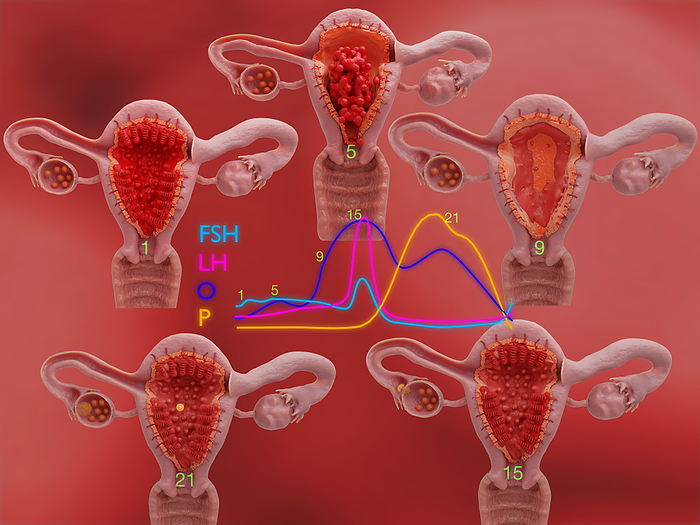
RF
Menstrual cycle, illustration
Illustration showing changes to the uterus and ovaries over the menstrual cycle. Levels of female sex hormones throughout the cycle are shown at centre. They are follicle stimulating hormone (FSH), luteinising hormone (LH), oestrogen (O) and progesterone (P). Once sexual maturity is reached up to 20 oocytes start developing into eggs (ovums) every menstrual cycle. Only one will reach full maturity as a Graafian follicle and release its egg at ovulation. The follicle then develops into a corpus luteum, which secretes progesterone to build up the endometrium, the bloody lining of the uterus, ready for a fertilised egg. If there is no fertilised egg after 12 days it stops secreting and degenerates into a corpus albicans. Without progesterone the endometrium sloughs off; this is menstruation. The cycle can now start again., by JUAN GAERTNER/SCIENCE PHOTO LIBRARY
S
0.4 MB
724 x 543 px
6.1 x 4.6 cm
$ 100.00
M
3.8 MB
2290 x 1718 px
19.4 x 14.5 cm
$ 180.00
L
45.8 MB
8000 x 6000 px
67.7 x 50.8 cm
$ 350.00
More
Top Categories
